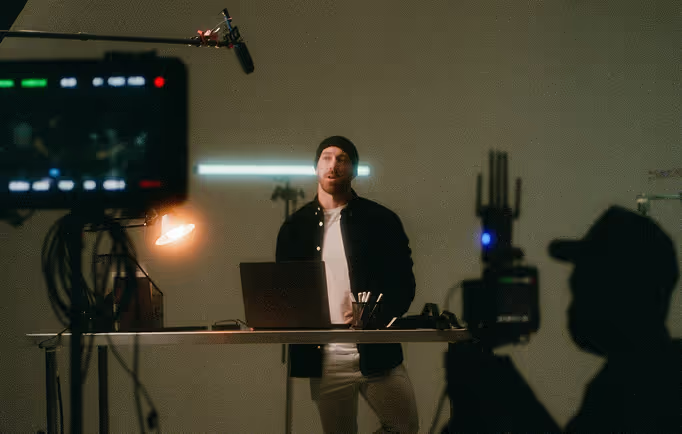Why Are Animated Explainer Videos So Perfect For STEM Content?

In the past few years there’s been an ever-increasing focus on the importance of STEM work and education. It refers to the fields of Science, Technology, Engineering, and Mathematics, and all their sub-categories – including medical science, biology, chemistry, computer science, economics and other social sciences, to name just a few. Given the unprecedented focus the global pandemic has put on science and medical professions in this year alone, it’s more important than ever for STEM-related organisations to have clear methods of communication with employees, students, and the wider public.
It’s for this reason that animated explainer videos have an ongoing history with the sciences: from highly sharable informational content like TED-Ed, to educational content and public service announcements. But why exactly are explainer animations so ideal for sharing STEM content?
1) because explainers are great at simplifying complex, science-y information
If there’s one thing good explainer videos excel at (and there are many things good explainer videos excel at – yes, we’re a little biased) it’s presenting information in a quick and easy to digest way. This is of utmost importance when the information is new – like explaining how new lockdown restrictions work – or complex – like the day-to-day effects of a new scientific procedure. Explainer videos work their simplicity magic for different organisations depending on the end goal: for example, creating explainers to give an overview of how a vaccine works to allay concerned patients; taking a scientific theory that’s otherwise hard to visualise and presenting it in an entertaining way for educational purposes; or explaining what your new technology startup does, and how it can benefit the customer.
2) because animation helps visualise abstract concepts
A huge number of concepts in STEM are naturally hard to film in live-action. To scratch the surface, engineering poses problems of scale and visual complexity. Scientific and technological processes can often involve invisible elemental reactions and natural phenomena. And huge portion of mathematics is comprised of entirely intangible abstract concepts. Animation is able to bypass these physical boundaries to depict the impossible in clear and creative ways.
3) because urgent medical information needs clarity
Some breakthroughs in medical science demand public awareness. Particularly in such uncertain times as, say, the entirety of 2020, transparency and clarity on the latest health and safety procedures are of high importance. Animated explainer videos are a reliable option for such public service announcements due to:
a) The simple visual clarity of the animation style (clear visual instructions help people to remember and follow guidelines more easily)
b) The succinct nature of the videos (short, efficient videos mean viewers are more likely to be engaged for the whole message without tuning out)
c) The non-threatening associations of animation (childhood associations of animation put viewers at ease, helping calm nerves about serious medical topics)
4) because explainer videos create a funnel to draw in wider audiences
I hate to use the ‘b’ word, but content about maths, engineering and science is often accused of being a little… boring, to say the least. But those who are intimately familiar with the work know how the real world applications of these fields can be anything but boring. The big challenge for those trying to sell information is to get past the knee-jerk disinterest many of us hold about topics we’re not familiar with.
Animated explainer videos can be a great tool in breaking that first layer of resistance because they’re excellent at creating an audience funnel. This is where a broader audience is hooked in with a relatable introduction and gradually presented more specific information bit by bit, making a complex topic feel much more accessible to a new audience.
In non-fiction literature, especially pop science content, a writer might employ this technique by using the first couple of paragraphs to tell a personal story, then mention how the story is an example of a concept they’re going to discuss. By this stage the reader is on board to learn more because they’re invested in the story and curious to understand the context around it. Explainer videos use bright, appealing animated characters and relatable problem/solution style scripts for this same reason: it’s to create a bridge between the topic and new viewers, to speak on the same level as them, and to present the image to the audience that ‘You can understand this, and I can walk you through it’.
5) because video is far more effective in learning than text
If you’re producing STEM content for educational purposes you’ll want to use a format that’s ideal for demonstration, engagement, and memory recall – i.e., video. Unsurprisingly, studies show that videos are far more effective in engaging student attention than text – but it’s the length and type of video that counts. First up, videos of under six minutes are more successful in keeping attention than longer clips. Second, recorded classroom sessions are, to the surprise of no one, not engaging. Also, a simple ‘personal feel’ to the content goes a lot further in engagement than a blockbuster production (https://elearningindustry.com/engagement-and-learning-does-video-improve).
6) because animated explainer videos are so accessible
In this way explainer videos are a great equaliser for those new to STEM content – they require only a few minutes of viewing commitment and focus on a single topic, often ending with a clear call to action. They’re animated in a way where the visuals are designed to support the message in an easily memorable way. In other words, the aim of most explainer videos is to make it as easy as possible for you to remember the message. This takes out many of the intimidation factors that put people off learning more about science, mathematics, and engineering. ‘It’s too hard’, ‘It’s boring’, or ‘It’ll take too much time to learn’ are no longer excuses when the content is neatly delivered to your preferred video platform in a two to three minute animated video.
Start a






